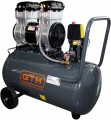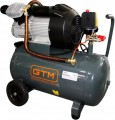The criterion for separating compressors according to this parameter is whether oil is necessary for the normal operation of the device.
—
Oily. Compressors that use oil during operation have a high motor resource (due to the fact that friction in their mechanism is reduced due to the presence of lubrication) and a lower noise level than oil-free ones. On the other hand, they are much more difficult to maintain and more expensive to operate. the oil supply has to be replenished periodically; and during operation, such a unit should be located on a flat horizontal surface. In addition, the outgoing air contains tiny drops of oil. Therefore, oil-based devices are poorly suited for certain types of work — for example, in the food industry, where such impurities are unacceptable, the use of special fine filters will be required.
—
Oil free. The main advantage of oil-free models can be called the purity of the exhaust air — it does not contain oil droplets and in most cases does not require additional purification. This makes these compressors perfect for medical, food and paint applications. In addition, they are simpler in design (respectively, in repair), do not require the hassle of providing lubrication, and can work in almost any position. On the other hand, high friction of parts significantly increases wear, which accordingly affects the resource.
The power of the engine installed in the compressor. It is not the main parameter in evaluating the efficiency of the device — here the performance and nominal pressure play a decisive role (see above), and the engine is selected in such a way that its power is sufficient to ensure the claimed characteristics. However, this indicator still has practical significance: in compressors with an electric motor (and there are now most of them; see “Engine type”), the engine power determines the total energy consumption of the device, as well as the requirements for the network where it is planned to connect it (for more details, see “Voltage networks"). In addition, the power of the engine (regardless of its type) must be known in order to calculate the optimal performance value using some special formulas.
For internal combustion engines, power is traditionally expressed in horsepower (hp); you can convert it to watts in this way: 1 hp. = 735 W.

